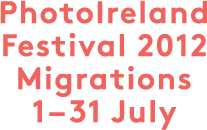Emigrating is tough for those that leave, but it can be heartbreak for the parents and family who stay in Ireland, writes CIARA KENNY in Irish Times.
To keep their dread of flying at bay as they hurtled down the runway at Dublin airport, Lynda and Paul Masterson focused their thoughts on their three twenty-something children, who were waiting for them with anticipation 24 hours away in Sydney. A mutual phobia had prevented the couple from ever flying together, but after 28 years of marriage and with two sons and a daughter living on the other side of the world, the time had finally come to conquer their fears.
“We had worried so much beforehand, but the flight itself was fine,” says Lynda. “The hostesses came around all the time with drinks and food to eat, and I sat by the window with my notebook jotting down the names of all the countries we were passing over on the way. We were too excited really. It had been years since we were all together as a family, and it was very emotional when we arrived.”
The couple spent three weeks over Easter exploring the east coast around Sydney, taking in the Opera House, Fitzroy Falls, Kangaroo Valley and Jervis Bay, but the highlight was simply spending time with their three kids, Laura (20), Gary (23) and Alan (26), and their sons’ partners, Jenna and Brooke, who all, for the time being, call Australia home.
“None of them made it back to Ireland last Christmas, it was the first time we were without all three of them, which was terribly hard,” Lynda says. “Going to see them was something we just had to do. Skype is great, but it is not the same as being there with them in their day-to-day lives. I would happily stay and just do their housework for them, and make them cups of tea.”
You can read a full version of the article here.







